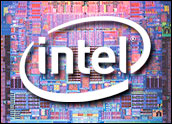
Word that the price of the so-called (US)$100 laptop will now be upwards of $175 per unit is not sitting well with long-time observers of the One Laptop Per Child (OLPC) program, who fear the numbers might mean the initiative is in trouble.
Reacting to reports that OLPC founder Nicholas Negroponte now figures the innovative little units will cost at least $75 more than initially envisioned, Wayan Vota, the editor of One Laptop Per Child News, told TechNewsWorld he is “stunned” and “disappointed.”
While critical of some aspects of the OLPC project, Vota loves the technological strides taken to create the “XO” units, which Negroponte wants distributed to children in poor countries as a means of sparking self-driven education. However, Vota said he can’t help but fear the OLPC project is in trouble.
Off Target
“Essentially, what it sounds like to me is OLPC is not hitting its targets,” said Vota. “The original target was to sell 5 million units in the first year. The new target is 3 million. At the same time, no government has actually come out and signed a purchase agreement with OLPC.”
Negroponte is now mentioning involvement by Citibank as a facilitator in the funding, Vota said. Negroponte and other OLPC officials could not be reached for comment. However, without solid “financial commitments” from the governments to eventually pay for the computers, OLPC will be in hot water, said Vota.
“I have a feeling there are no commitments yet,” he said. Vota was also concerned by word that OLPC is not going to take orders until May. “That tells me no one signed up,” he said. “That tells me it was a weave and dodge of ‘We don’t have commitments and we are going to fudge that somehow.'”
A Tough World
Vota’s observations were shared by another long-time OLPC-watcher, Lee Felsenstein of the Fonly Institute, which works to bring computing to “ordinary people.” The tough realty of the world might now be exercising itself on the OLPC’s idealism, Felsenstein said.
“OLPC started as a mental process in Nick Negroponte’s head,” Felsenstein told TechNewsWorld. “It did not stem from research and, sooner or later, it was going to run up against the real world. My guess is that this is now happening. Very clearly, in my view, things are going on under the surface that will not be revealed until later.”
These “things,” he suggested, are likely to involve Microsoft and, possibly, Intel. Indeed, another of Negroponte’s new reported revelations is that the open source OS-based laptop will be capable of running Windows.
Political Posturing
OLPC is “hedging around” the probable truth: That it can’t get governments to pay for the XOs and will have even more trouble doing so as the true cost of building them continues to become apparent, according to industry analyst Rob Enderle.
“That $175 still does not contain all the related costs,” Enderle told TechNewsWorld. “The support costs are in addition to that. Also, what they are hedging around is that, although a lot of governments promised to work with OLPC, none have come up with any money. That’s historically been a problem. Politicians want publicity but they don’t want to pay.”
What can’t be ignored is Microsoft’s recent announcement about offering $3 versions of Windows to impoverished countries that give their people free computers. “I think that’s Microsoft trying to get in the game any way they can,” said Vota.
Vota hopes it all works out eventually for OLPC. “I wish them the best,” said Vota. “Honestly, I would love to see their technology get out into the field: the wireless mesh, the screen that can be used outdoors and the power-management technology are really revolutions in computing.”





















































